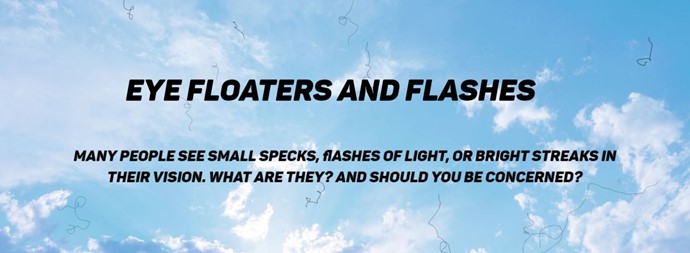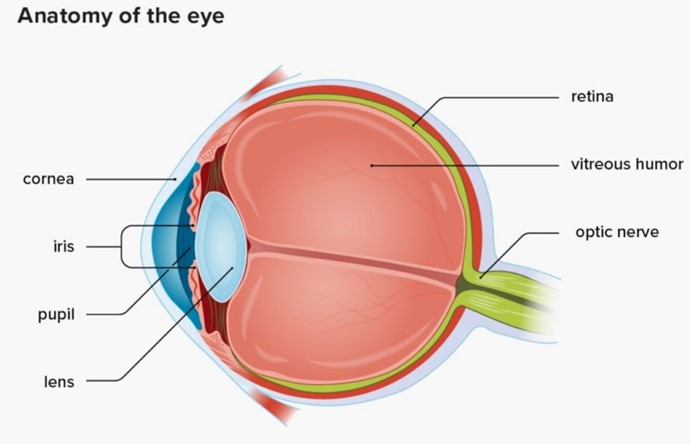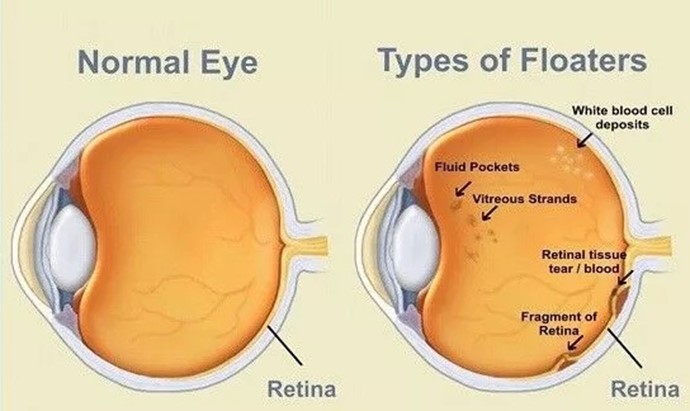Eye Floaters and Flashes

Have you ever spotted a small speck, dot, or squiggle floating in the air, only to have it flit away when you tried to look at it directly? Or have you noticed flickering lights or lightning streaks you knew weren't really there?
If so, you are one of many people who have experienced the common vision phenomenon known as eye floaters and flashes. Floaters and flashes are a normal part of the aging process and most of the time are not considered a medical problem. However, a rapid onset of many floaters and flashes could indicate that a retinal tear has occurred. A tear in the retina can lead to a retinal detachment, which if not treated quickly could cost you your sight.
Why Floaters and Flashes Occur
Our eyes are filled with a clear gel known as the vitreous humour, which helps the eyeball keep its shape while allowing light to pass through to the retina; the retina is located on the eye's back wall and contains nerve cells that perceive visual signals from light. Eye floaters and flashes are caused by changes in the vitreous gel that occur as we get older.

Floaters
Eye floaters occur when the vitreous breaks down causing particles to form in the gel. These particles block the light passing through your eye, casting shadows on the retina. The shadows are seen as floaters, which can be created in the following ways.
Protein clumps form in the vitreous gel and look like squiggles or cobwebs. These tend to remain and people learn to ignore them.
Blood vessels burst in the retina as the shrinking vitreous gel pulls on them. These small haemorrhages cause little black dots in your field of vision and tend to disappear eventually as the blood is reabsorbed into the body.
Posterior vitreous detachment (PVD), this is where the vitreous gel pulls away from the retina. Debris from the site of the detachment drifts into the vitreous gel and causes floaters that resemble cobwebs, mist, or a veil that obscures part of your field of vision. You may also see flashes of light. In most cases these floaters tend to become less noticeable after a few months.

Flashes
Most flashes happen when the vitreous gel inside the eye shrinks or changes, pulling on the retina (the light sensitive lining of the eye).Flashes of light usually appear and then fade quickly, although may appear on and off for weeks or months. Visual flashes can also be aura symptoms caused by an oncoming migraine attack. Migraine aura may look like shimmering jagged lines or appear wavy, like heat waves and can occur even if you don’t have a headache.
Treatment
Eye floaters and flashes normally require no treatment. Flashes usually fade away, and over time, most people don't notice floaters as often, because the brain learns to filter out the visual interference.
If floaters are interfering with your daily life and activity, there is a surgical procedure called a vitrectomy that you can undergo to remove them and also a newer treatment called YAG laser vitreolysis, however you would need to discuss the risks and benefits with your ophthalmologist before undergoing either of these.
Sudden Floaters, Flashes, and Vision Loss May Signal Retinal Detachment. The tugging by the vitreous gel can sometimes cause a more serious medical condition in which the retina tears and detaches from the eye. If this occurs, you could partially or completely lose your vision in that eye. Symptoms of retinal detachment include:
- A sudden increase or first time appearance of flashes or floaters.
- The appearance of a curtain or shadow that moves toward the centre of your vision over time.
- Vision that has become blurred or distorted.
If you experience any of the symptoms above you must seek an urgent ophthalmic opinion.
